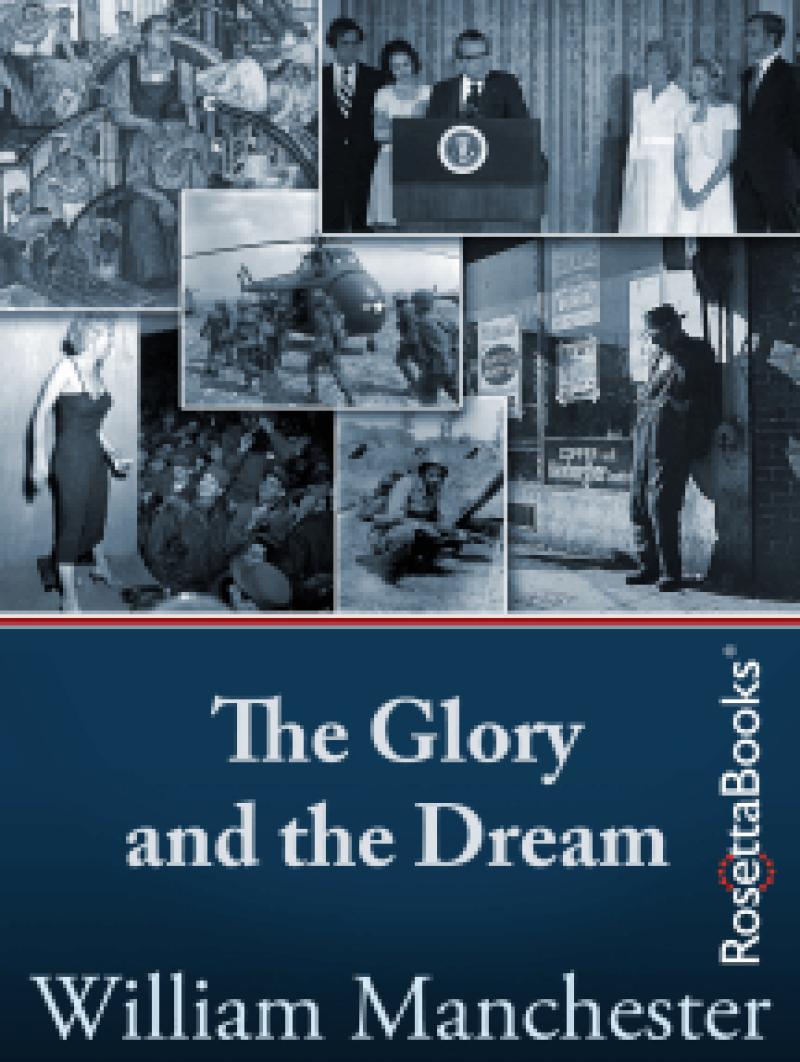History Lesson : In 1940 There Were Two Negro Officers In The Army And None In The Navy


A survey of America and race just prior to WW2.
excerpt from The Glory And The Dream by William Manchester
===================
In 1940 there were two Negro officers in the Army and none in the Navy. Black soldiers were usually assembled in the “port” battalions that loaded and unloaded ships; only three regiments accepted Negro recruits. Black sailors were confined to the mess; if they were lucky they could wear short white jackets, wait upon officers, and bow deeply when spoken to. Early in 1942 Eisenhower rounded up reports on what was called “the colored troop problem” (no one suggested that it was anyone else’s problem). He found it virtually intractable, but he took a step forward by removing racial incidents from the war correspondents’ censorship list. Some correspondents argued with him; they were afraid “troublemakers” at home would exaggerate their stories. The general refused and asked them, in effect, why America was fighting this war. They had no answer, but if one had been from South Carolina, he could have pointed out that the legislature there had passed a resolution declaring that American troops were “fighting for white supremacy.”
Bigotry openly stalked the countryside in those last weeks of peace. It was bad enough for the Jews, who were barred from prestigious law firms, admitted to medical schools on a quota basis, and excluded from employment by the phrase “Christian only”; none of his peers censured Mississippi Congressman John Rankin when he stood in the well of the House and described a newspaperman as “a little kike.” But anti-Semitism never achieved the depths of anti-Negro racism.
Senator Theodore G. “The Man” Bilbo, Rankin’s fellow Mississippian, enlivened official proceedings from time to time with such Bilboisms as “We people of the South must draw the color line tighter and tighter,” “The white man is the custodian of the gospel of Jesus Christ,” and “We will tell our nigger-loving Yankee friends to go straight to hell.” It was outside a Mississippi fence that a sign read, “Easter egg hunt. White children 9:30 A.M.—colored children 3:30 P.M.” But white racism flourished north of the Mason and Dixon line, too.
Congress refused to go on record against lynching. The Baltimore Sun, which regarded itself as an enlightened newspaper, reported as a scandal the fact that in a federal work relief camp “colored women live in screened-in cabins.” In the celebrated Rhinelander divorce suit, the husband claimed that he hadn’t known that his wife was part Negro, and Alice Rhinelander had to strip to the waist to prove he must have known it. Amos ’n’ Andy’s devoted fans included J. Edgar Hoover, who reported to President Roosevelt that “a good proportion of unrest as regards race relationships results from Communist activities.”
Chicago’s great Negro newspaper the Defender warned its southern readers to shed their illusions; they weren’t wanted in the North. But remaining in the South meant more than suffering indignities from such thugs as T. Eugene “Bull” Connor, who even then was Birmingham’s head of public safety. Staying home meant trying to live on $634 a year in southern cities, or $566 a year in the rural South. That could be doubled in New York or Detroit, and so the migration of a million blacks began, northward to a living wage, but north to ghettos, too. In exchange for food, clothing, and a better education, they paid a terrible price in social disintegration and mass frustration. It was in these years, in northern slums, that many of the militant blacks of the 1960s were born. Their early heroes were black musicians, and great black athletes like Jesse Owens and Joe Louis. Sportswriters were acclaiming Louis as the greatest prizefighter in history—he had just defended his title successfully for the ninth time—and he was aware of his social role. “I want to fight honest,” he said, “so that the next colored boy can get the same break I got. If I cut the fool, I’ll let them down.” Among his adoring audience was Malcolm X, who wrote in his
autobiography that “Every Negro boy old enough to walk wanted to be the next Brown Bomber.”
Some of the greatest music ever heard in America was recorded in these years, and the treatment black musicians received from white Americans was a national disgrace. Benny Goodman broke the color line by adding Teddy Wilson to his band, but even then hotel managers refused to let Wilson play with the band on dance floors. In New York, the magnificent Duke Ellington band was allowed to play at Loew’s State Theater on Broadway but was barred from the Paramount and the Strand. Road trips were worse. Finding a place to eat and a bed were daily humiliations. On one of Goodman’s southern swings two policemen were hustling Lionel Hampton to jail when their chief appeared; he turned out to be a jazz fan and Hampton was saved. Billie Holiday had to enter and leave hotels by the back door, and in Detroit, where a theater manager thought she looked too light-skinned to appear with blacks, she had to apply dark makeup. Once she made a southern tour with Artie Shaw’s band. Of it she said, “It got to the point where I hardly ever ate, slept, or went to the bathroom without having a major NAACP-type production.”
Now and then they got a little of their own back. Pearl Bailey recalls a confrontation in one of Chicago’s Chinese restaurants. A Chinese waiter came over and, she remembers, “started with a language I couldn’t understand, but… kept ending with ‘Me no serve.’ That did it. I told him in a slow, Oriental drawl, ‘You think I came to America to pick cotton. I was told you came to do laundry. So, brother, serve.’ And you know what? He did.” Lena Horne made a magnificent gesture of defiance in one of the first prisoner of war camps. The camp commander had filled the front rows with German soldiers. Their black guards had been seated in back. Lena slowly stepped down from the stage, walked down the aisle, and with her back turned to the Germans, sang to her own people.
President Roosevelt was inclined to postpone a civil rights program until after the war, but now and then his hand was forced. Black leaders, watching federal money pouring into defense plants, saw Negro job applicants being turned away. In the spring of 1941 A. Philip Randolph, head of the Brotherhood of Sleeping Car Porters, told the President that the government was, in effect, subsidizing discrimination, and if it didn’t stop he was going to lead a massive protest march on Washington. The President hesitated. Randolph mobilized his men and set the date: July 4. Roosevelt, dismayed at the prospect of a spectacle which would damage the illusion of national unity, yielded on June 25 and issued Executive Order 8802, establishing a Committee on Fair Employment Practices. Employers and unions were required “to provide for the full and equitable participation of all workers in defense industries, without discrimination because of race, creed, color, or national origin.”
The policing power was weak, and Negro leaders, who had wanted an order with real teeth, felt defeated. Nevertheless the moment was historic; the great movement which eventually emerged from it would challenge all subsequent American Presidents. Within the administration, Eleanor Roosevelt and Harold Ickes were those most sensitive to the injustices inflicted upon American blacks, and they joined to give prewar America’s civil rights record one shining moment of glory. Marian Anderson was widely regarded as the finest singer in the world; “a voice like yours,” Toscanini had told her, “comes but once in a century.” But she was also Negro, and when a peppy, redheaded newspaperwoman named Mary Johnson heard of plans for an Anderson concert in Constitution Hall, she played a hunch. Constitution Hall, Miss Johnson knew, belonged to the Daughters of the American Revolution. Calling upon the DAR president, Mrs. Henry M. Robert Jr., she asked her where the Daughters’ position was in all this. Right in the driver’s seat, Mrs. Robert snapped, and the plans could stop right where they were. Neither Marian Anderson nor any other Negro artist would ever be heard in Constitution Hall.
The next move was made by Walter White of the NAACP. He suggested that one way to draw attention to DAR prejudice would be for Miss Anderson to sing in an open-air, free concert in Washington. She consented, and the universal feeling in the NAACP was that the Lincoln Memorial would be appropriate. That was where Ickes came in; the concert could not be staged without permission from the Secretary of the Interior. Told of the DAR’s stand, he phoned the White House. The President was just about to leave for Warm Springs. Ickes asked him to wait until he could get over there. When Roosevelt heard the details, he ordered Ickes to stage the greatest outdoor concert possible. Eleanor Roosevelt resigned from the DAR, and at White’s suggestion she and Ickes recruited a blue-ribbon sponsoring committee of cabinet members,
Supreme Court justices, senators, congressmen, and other distinguished men and women. What the president of the Daughters had done was to provide the concert with a massive surge of publicity, literally beyond price. A few prospective sponsors weaseled out with the excuse that their positions prohibited them from participation in controversial issues, but the overwhelming majority came, including the diplomatic corps. The audience was seventy-five thousand. From the opening bars of “America” to the last notes of “Nobody Knows the Trouble I’ve Seen,” they sat spellbound. Then there was a convulsive rush toward the singer which for a moment or two threatened to become a stampede. Among those thrusting their hands toward Miss Anderson, White noticed, was a slender black child dressed in Easter finery. Her cheeks were wet with tears, and despite her youth, her fingers bore the marks of manual labor. White said afterward, “If Marian Anderson could do it, the girl’s eyes seemed to say, then I can, too.”
 Article is LOCKED by author/seeder
Article is LOCKED by author/seeder


In case anyone is interested in actual history.
Some people think racism ended in 1865 when the slaves were freed.
Doesn't appear your fellow travellers are. They just delete history that doesn't fit their prejudices.
Congress refused to go on record against lynching.
Crazy huh? With Democrats controlling the most partisanly lopsided Congresses since the Civil War, they refused to even move against lynching.
It works like this, in the past Democrats were racist, now Republicans are.
3 percent of Republicans support Black Lives Matter according to a new poll.
So if a person doesn’t support black lives matter that person is a racist?
Not necessarily. I do think though that if 97% of Republicans oppose Black Lives Matter it is hardly possible to promote the Republican Party as the party of civil rights progress.
[deleted]
What are you, a fucking comedian?
[deleted]
As funny as a rubber crutch.
[deleted]
I cant even post a history article without it getting trolled.
Nobody called anyone a Negro in 2021. The article is referring to 1940 when they were called Negros. This isnt rocket science Moose. In any event, the book The Glory And The Dream was written in 1973.
[Deleted]
[Deleted] Either comment on the content of the article or all your comments will be reported as off topic.
[deleted]
Either comment on the content of the article or all further comments by you will be reported as off topic.
[deleted]